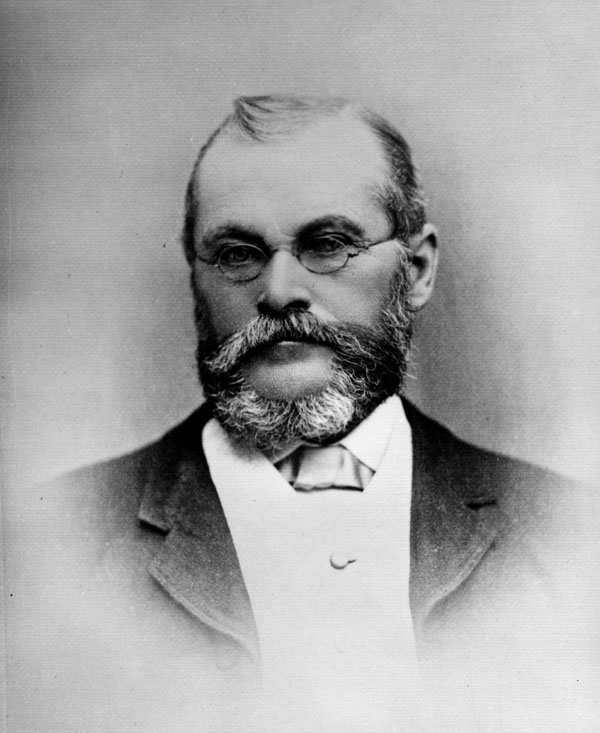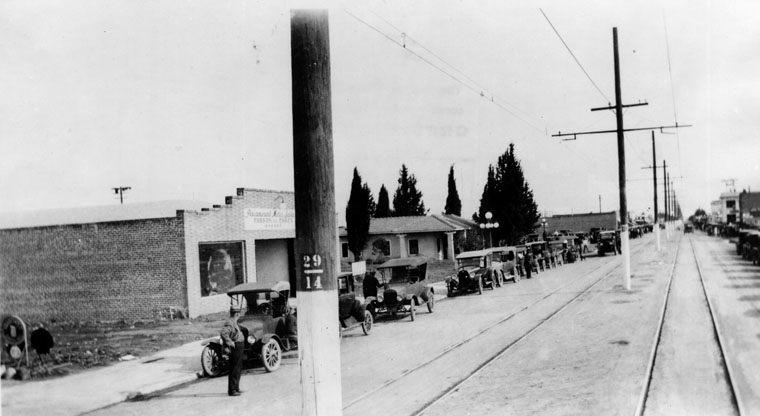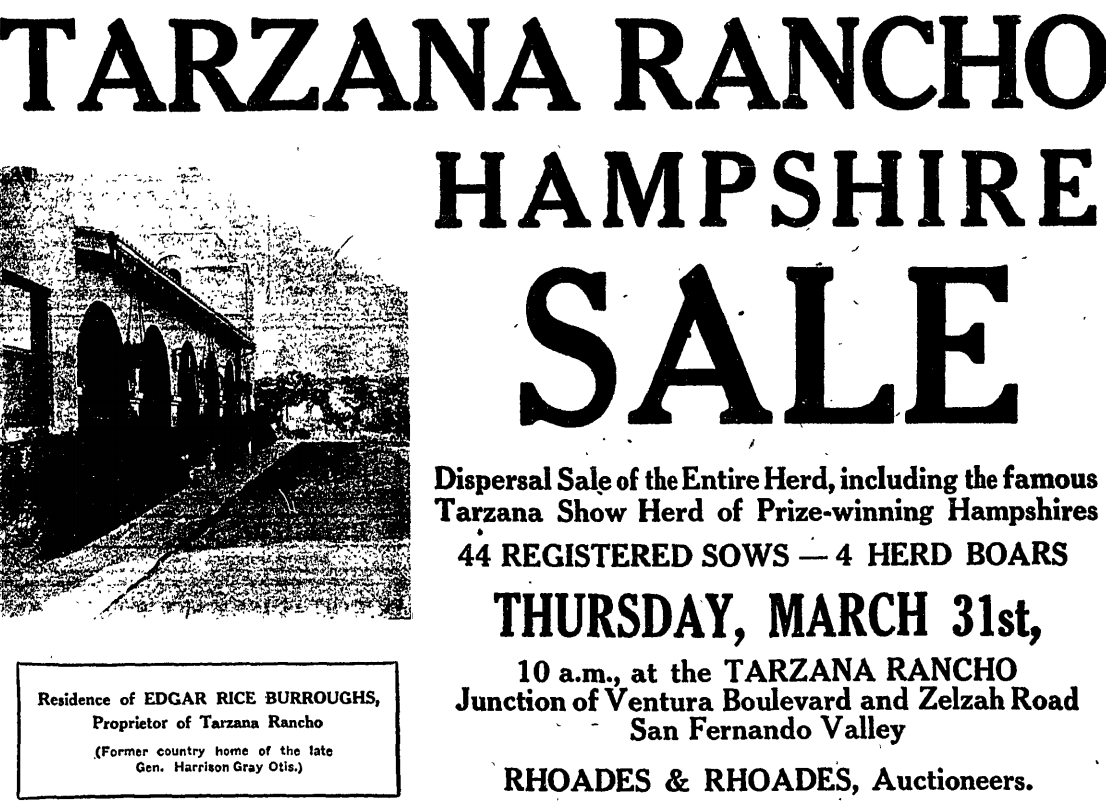|
Patrick D. McGee
Patrick D'Arcy McGee (March 5, 1916 – May 30, 1970) was a Republican member of the California State Assembly for the 64th district from 1950 to 1957 and from 1966 until his death in 1970. He was a Los Angeles City Council member from 1957 to 1961, when he opposed the city's agreement to bring the Dodgers baseball team to a new stadium in Chavez Ravine. Biography McGee was born on March 5, 1916, near Osceola, Ontario, Canada, and moved to Detroit, Michigan. as a child. He attended Notre Dame University until he joined the Royal Canadian Air Force in 1940 and later the U.S. Navy during World War II. He received a Distinguished Flying Cross (United Kingdom) for bravery. He flew many bombing missions over Dresden and other German cities, and won the DFC for bringing his B17 to a safe landing in a field in Dover, GB with a flaming hole in the undercarriage and his co-pilot dead. After the war, he earned a degree at Harvard Law School. He next became a research attorney with the ... [...More Info...] [...Related Items...] OR: [Wikipedia] [Google] [Baidu] |
Harvard Law School
Harvard Law School (Harvard Law or HLS) is the law school of Harvard University, a private research university in Cambridge, Massachusetts. Founded in 1817, it is the oldest continuously operating law school in the United States. Each class in the three-year JD program has approximately 560 students, among the largest of the top 150 ranked law schools in the United States. The first-year class is broken into seven sections of approximately 80 students, who take most first-year classes together. Aside from the JD program, Harvard also awards both LLM and SJD degrees. Harvard's uniquely large class size and prestige have led the law school to graduate a great many distinguished alumni in the judiciary, government, and the business world. According to Harvard Law's 2020 ABA-required disclosures, 99% of 2019 graduates passed the bar exam. The school's graduates accounted for more than one-quarter of all Supreme Court clerks between 2000 and 2010, more than any other law schoo ... [...More Info...] [...Related Items...] OR: [Wikipedia] [Google] [Baidu] |
Mayor Of Los Angeles
The mayor of the City of Los Angeles is the official head and chief executive officer of Los Angeles. The officeholder is elected for a four-year term and is term limit, limited to serving no more than two terms. (Under the Constitution of California, all judicial, school, county and city offices are nonpartisan.) Forty-two men and one woman have been mayor since 1850, when California became a state following the American Conquest of California. Between 1781 and the conquest, Californios, or native-born residents of the Mexican territory, List of pre-statehood mayors of Los Angeles, served as ''alcalde,'' equivalent to ''mayor.'' Karen Bass has been the mayor since taking office on December 12, 2022. Duties and powers Los Angeles has a council form of government, giving the mayor the position of chief executive of the city. The mayor appoints general managers and commissioners, removes officials from city posts, and proposes a yearly budget. Most of the mayor's appointments and p ... [...More Info...] [...Related Items...] OR: [Wikipedia] [Google] [Baidu] |
Canoga Park
Canoga Park is a neighborhood in the San Fernando Valley region of the City of Los Angeles, California. Before the Mexican–American War, the district was part of a rancho, and after the American victory it was converted into wheat farms and then subdivided, with part of it named Owensmouth as a town founded in 1912. It joined Los Angeles in 1917 and was renamed Canoga Park on March 1, 1931, after Canoga, New York. History Pre-American history The area of present-day Canoga Park was the homeland of Native Americans in the Tongva-Fernandeño and Chumash-Venturaño tribes, that lived in the Simi Hills and along to the tributaries of the Los Angeles River. They traded with the north Valley Tataviam-Fernandeño people. Native American civilizations inhabited the Valley for an estimated 8,000 years. Their culture left the Burro Flats Painted Cave nearby. From 1797 to 1846, the area was part of Mission San Fernando Rey de España (Mission San Fernando). After the Mexican War ... [...More Info...] [...Related Items...] OR: [Wikipedia] [Google] [Baidu] |
Reseda, Los Angeles
Reseda is a neighborhood in the San Fernando Valley region of Los Angeles, California. It was founded in 1912, and its central business district started developing in 1915. The neighborhood was devoted to agriculture for many years. Earthquakes struck the area in 1971 San Fernando earthquake and 1994 Northridge earthquake. The neighborhood has 15 public and five private schools. The community includes public parks, a senior center and a regional branch library. History Founding and growth The area now known as Reseda was inhabited by Indigenous peoples of the Americas, Native Americans of the Tongva tribe who lived close to the Los Angeles River. In 1909 the Suburban Homes Company, a syndicate led by Hobart Johnstone Whitley, H.J. Whitley, general manager of the Board of Control, Harry Chandler, Harrison Gray Otis (publisher), H.G. Otis, Moses Sherman, M.H. Sherman and O.F. Brandt purchased 48,000 acres of the Farming and Milling Company for $2,500,000. Henry E. Huntington ... [...More Info...] [...Related Items...] OR: [Wikipedia] [Google] [Baidu] |
Northridge, Los Angeles, California
Northridge is a neighborhood in the San Fernando Valley region of the City of Los Angeles. The community is home to California State University, Northridge, and the Northridge Fashion Center. Originally named Zelzah by settlers in 1908, the community was renamed North Los Angeles in 1929 but the appellation sometimes caused confusion between North Hollywood and Los Angeles. In 1938, civic leader Carl S. Dentzel decided to rename the community to Northridge Village, which morphed into modern-day Northridge. The Northridge area can trace its history back to the Tongva people and later to Spanish explorers. It was sold by the Mexican governor Pio Pico to Eulogio de Celis, whose heirs divided it for resale. Population The 2000 U.S. census counted 57,561 residents in the Northridge neighborhood—or , among the lowest population densities for the city. In 2008, the city estimated that the population had increased to 61,993. In 2000 the median age for residents was 32, about average ... [...More Info...] [...Related Items...] OR: [Wikipedia] [Google] [Baidu] |
Tarzana, Los Angeles
Tarzana is a suburban neighborhood in the San Fernando Valley region of Los Angeles, California. Tarzana is on the site of a former ranch owned by author Edgar Rice Burroughs. It is named after Burroughs' fictional jungle hero, Tarzan. History The area now known as Tarzana was occupied in 1797 by Spanish settlers and missionaries who established the San Fernando Mission. Later absorbed by Mexico, the land was surrendered to the United States in 1848 by the Treaty of Guadalupe Hidalgo following the Mexican–American War. Under US rule it evolved into a series of large cattle ranches. Investors took over in the 1870s, turning grazing into large-scale wheat farm operation. The area was purchased in 1909 by the Los Angeles Suburban Homes Company. '' LA Times'' founder and publisher General Harrison Gray Otis invested in the company and also personally acquired in the center of modern-day Tarzana. In February 1919, Edgar Rice Burroughs, author of the popular ''Tarzan'' novels, ... [...More Info...] [...Related Items...] OR: [Wikipedia] [Google] [Baidu] |
Encino, Los Angeles
Encino (Spanish for "oak") is a neighborhood in the San Fernando Valley region of Los Angeles, California. History In 1769, the Spanish Portolá expedition, first Europeans to see inland areas of California, traveled north through Sepulveda Pass into the San Fernando Valley on August 5 and stayed two nights at a native village near what is now Los Encinos State Historic Park. Fray Juan Crespi, a Franciscan missionary traveling with the expedition, named the valley "El Valle de Santa Catalina de Bolonia de Los Encinos" (The Valley of St. Catherine of Bologna of the Holm Oaks). All of Crespi's name was later dropped except "Encino". Rancho Los Encinos (''Ranch of Holm Oaks'') was established in 1845 when a large parcel of former Mission San Fernando land was granted to three Mission Indians by governor Pio Pico. Many ranchos were created after the secularization of the California missions, which began in 1834. Encino derives its name from the rancho. Demographics The 2000 U ... [...More Info...] [...Related Items...] OR: [Wikipedia] [Google] [Baidu] |
Woodland Hills, Los Angeles
Woodland Hills is a neighborhood bordering the Santa Monica Mountains in the San Fernando Valley region of Los Angeles, Los Angeles, California. Geography Woodland Hills is in the southwestern region of the San Fernando Valley, which is located east of Calabasas, California, Calabasas and west of Tarzana, Los Angeles, Tarzana. On the north it is bordered by West Hills, Los Angeles, West Hills, Canoga Park, Los Angeles, Canoga Park, Winnetka, Los Angeles, Winnetka, and Reseda, Los Angeles, Reseda, and on the south by the Santa Monica Mountains. Some neighborhoods are in the foothills of the Santa Monica Mountains. Running east–west through the community are U.S. Route 101 in California, U.S. Route 101 (the Ventura Freeway) and Ventura Boulevard, whose western terminus is at Valley Circle Boulevard in Woodland Hills. History The area was inhabited for around 8,000 years by Native Americans in the United States, Native Americans of the Fernandeño, Fernandeño-Tataviam and Chum ... [...More Info...] [...Related Items...] OR: [Wikipedia] [Google] [Baidu] |
San Fernando Valley
The San Fernando Valley, known locally as the Valley, is an urbanized valley in Los Angeles County, California. Located to the north of the Los Angeles Basin, it contains a large portion of the City of Los Angeles, as well as unincorporated areas and the Municipal corporation, incorporated cities of Burbank, California, Burbank, Calabasas, California, Calabasas, Glendale, California, Glendale, Hidden Hills, California, Hidden Hills, and San Fernando, California, San Fernando. The valley is well known for its iconic film studios such as Warner Bros. Studios, Burbank, Warner Bros. Studio and Walt Disney Studios (Burbank), Walt Disney Studios. In addition, it is home to the Universal Studios Hollywood theme park. Geography The San Fernando Valley is about bound by the Santa Susana Mountains to the northwest, the Simi Hills to the west, the Santa Monica Mountains and Chalk Hills to the south, the Verdugo Mountains to the east, and the San Gabriel Mountains to the northeast. The ... [...More Info...] [...Related Items...] OR: [Wikipedia] [Google] [Baidu] |
Reseda, California
Reseda is a neighborhood in the San Fernando Valley region of Los Angeles, California. It was founded in 1912, and its central business district started developing in 1915. The neighborhood was devoted to agriculture for many years. Earthquakes struck the area in 1971 San Fernando earthquake and 1994 Northridge earthquake. The neighborhood has 15 public and five private schools. The community includes public parks, a senior center and a regional branch library. History Founding and growth The area now known as Reseda was inhabited by Native Americans of the Tongva tribe who lived close to the Los Angeles River. In 1909 the Suburban Homes Company, a syndicate led by H.J. Whitley, general manager of the Board of Control, Harry Chandler, H.G. Otis, M.H. Sherman and O.F. Brandt purchased 48,000 acres of the Farming and Milling Company for $2,500,000. Henry E. Huntington extended his Pacific Electric Railway (Red Cars) through the Valley to Owensmouth (now Canoga Park). The ... [...More Info...] [...Related Items...] OR: [Wikipedia] [Google] [Baidu] |
Requiem
A Requiem or Requiem Mass, also known as Mass for the dead ( la, Missa pro defunctis) or Mass of the dead ( la, Missa defunctorum), is a Mass of the Catholic Church offered for the repose of the soul or souls of one or more deceased persons, using a particular form of the Roman Missal. It is usually celebrated in the context of a funeral (where in some countries it is often called a Funeral Mass). Musical settings of the propers of the Requiem Mass are also called Requiems, and the term has subsequently been applied to other musical compositions associated with death, dying, and mourning, even when they lack religious or liturgical relevance. The term is also used for similar ceremonies outside the Roman Catholic Church, especially in Western Rite Orthodox Christianity, the Anglo-Catholic tradition of Anglicanism, and in certain Lutheran churches. A comparable service, with a wholly different ritual form and texts, exists in the Eastern Orthodox and Eastern Catholic church ... [...More Info...] [...Related Items...] OR: [Wikipedia] [Google] [Baidu] |





